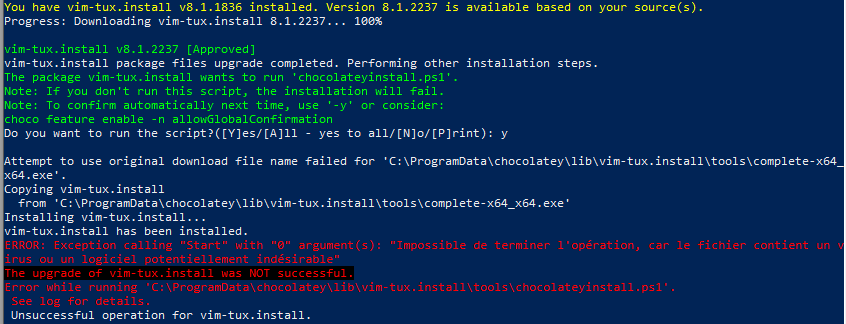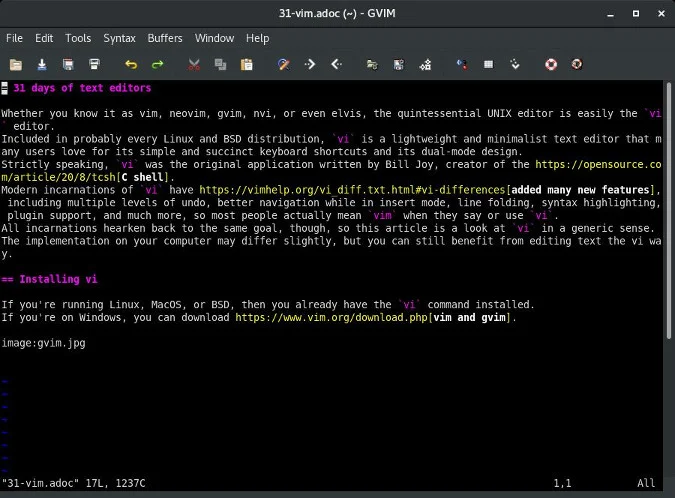Gvim



Gvim74
Ok folks, I found an easy way to save your font and color scheme settings in gVIM. Here goes:
First, specify your font by going to Edit > Select Font (btw, I'm on a Windows machine, so maybe the Linux menus are different).
Second, after you've selected your font, enter the command :mkvimrc!. This will write your font choice (and key mappings, etc) to your _vimrc file. This will NOT save your color settings if you're using a theme, however. To tell gVIM to use a color theme at startup, go to the next step.
Third, to specify your color theme, enter the command :e _vimrc. This will open your VIM settings file for editing. Scroll to the bottom of the file and add the line 'colors blue'. You can specify whatever color theme you want in place of 'blue', provided you use the name of the theme itself. No file references are necessary. And it's case-insensitive too, so you could enter 'colors Elflord' or 'colors elflord' and be fine either way. Just make sure you write the file to disk before you quit gVIM.
Now, restart gVIM to see the fruits of your labor.
Hope this helps. If anyone can figure out how to preseve window sizes, I'd love to know.
First, specify your font by going to Edit > Select Font (btw, I'm on a Windows machine, so maybe the Linux menus are different).
Second, after you've selected your font, enter the command :mkvimrc!. This will write your font choice (and key mappings, etc) to your _vimrc file. This will NOT save your color settings if you're using a theme, however. To tell gVIM to use a color theme at startup, go to the next step.
Third, to specify your color theme, enter the command :e _vimrc. This will open your VIM settings file for editing. Scroll to the bottom of the file and add the line 'colors blue'. You can specify whatever color theme you want in place of 'blue', provided you use the name of the theme itself. No file references are necessary. And it's case-insensitive too, so you could enter 'colors Elflord' or 'colors elflord' and be fine either way. Just make sure you write the file to disk before you quit gVIM.
Now, restart gVIM to see the fruits of your labor.
Hope this helps. If anyone can figure out how to preseve window sizes, I'd love to know.
Gvim Tutorial
The third one is for the Launcher (this project). For example GVimPortable7.0.2 is the third launcher release (I start counting at '0') of vim-7.0 Additionally a release can have a patchlevel. These releases correct minor bugs and start counting at '1'. An example is GVimPortable7.0.2-p3. GUI executable gvim##.zip gvim82.zip This is the 'normal' GUI version. OLE GUI executable gvim##ole.zip gvim82ole.zip A GUI version with OLE support. This offers a few extra features, such as integration with Visual Developer Studio. But it uses quite a bit more memory.